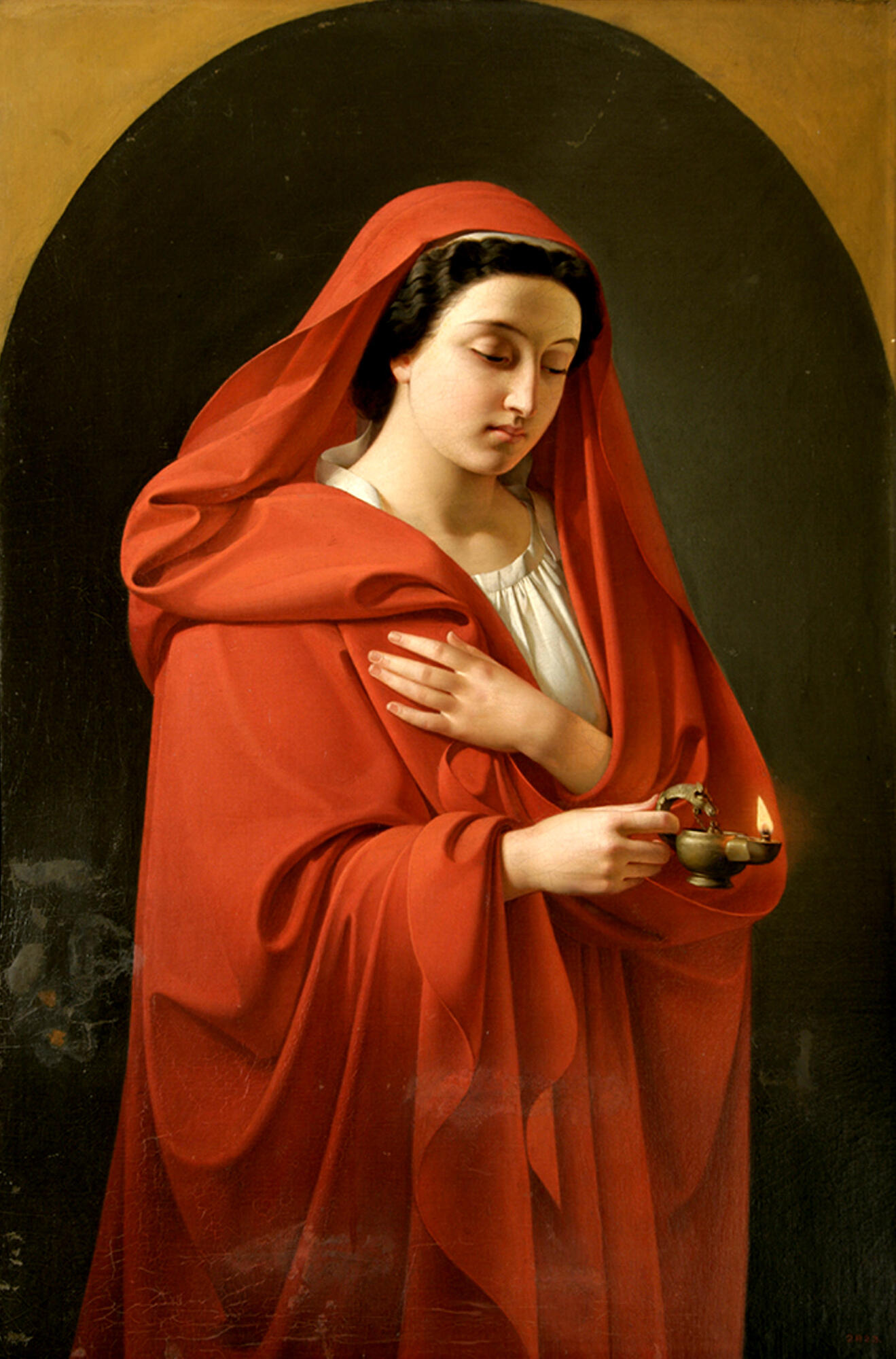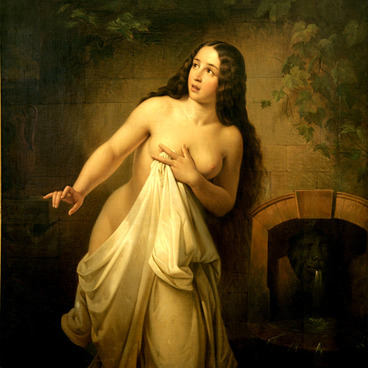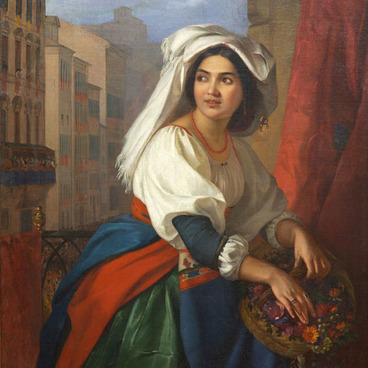In ancient Rome the Vestals were the priestesses of the goddess Vesta. Their duties included maintaining the sacred flame in the temple and making sacrifices. The Romans treated them with reverence, and the rituals they conducted were considered a matter of national importance. The priestesses were chosen from among girls between 6 to 10 years old, and always from the Rome residents’ families. They served Vesta for 30 years: the first ten years were years of training, the second decade was the time of direct service, and in the last ten years the Vestals themselves were engaged in the teaching young priestesses. Vestals were supposed to be celibate. Those who violated this requirement faced a terrible punishment to be buried alive. After 30 years, the priestesses were relieved of their cult duties and had the right to marry.
The images of the Vestals are immortalized in myths and legends about the history of Ancient Rome. The Russian painter Yegor Kovrigin (1819, Korbulaki - 1853, Rome) dedicated his work to them. He spent the last years of his short life in Italy. The history of the sunny country, irresistible charm and unique flavor of the Eternal City inspired the artist to create a charmingly expressive picture.
The collective image he created is far from historical specifics. The flame tongue in the painting refers to the cult of service to Vesta and the sacred fire in her temple, but the orange blanket could hardly have been part of the ritual outfit of the priestesses of this goddess, who were dressed in white from head to toe.
However, the artist does not give additional clues to understand the romanticized image. He does not build any plot narrative or complex composition, and even the background is depicted vaguely. Nothing distracts the viewer from contemplating the beautiful woman’s face and well-painted hands. The blazing folds of the veil enveloping the priestess create a solemnly sublime character, a reference to the masterpieces of Italian academicians.
In this work, one can clearly feel Kovrigin’s passion for the history of Rome as well as his fascination with the Eternal City, where he was led by his desire to “improve his professional skills”. This intention was traditional among graduates of the St. Petersburg Art Academy, where the historical genre was considered to be the main one in painting.
“The Vestal” followed the classical traditions of Russian academicism, and the artist presented it to the Academy in 1852 in order to receive the title of academician. However, it was only elevated to the “appointed” (candidate) for academicians in historical painting. Nevertheless, the artist did not give up on neither Italy nor his passion for its history, continuing to work on the canvas “Ovid reads his works at the Forum”. That painting remained unfinished due to the artist’s death, who passed away at the age of only thirty-three.
The images of the Vestals are immortalized in myths and legends about the history of Ancient Rome. The Russian painter Yegor Kovrigin (1819, Korbulaki - 1853, Rome) dedicated his work to them. He spent the last years of his short life in Italy. The history of the sunny country, irresistible charm and unique flavor of the Eternal City inspired the artist to create a charmingly expressive picture.
The collective image he created is far from historical specifics. The flame tongue in the painting refers to the cult of service to Vesta and the sacred fire in her temple, but the orange blanket could hardly have been part of the ritual outfit of the priestesses of this goddess, who were dressed in white from head to toe.
However, the artist does not give additional clues to understand the romanticized image. He does not build any plot narrative or complex composition, and even the background is depicted vaguely. Nothing distracts the viewer from contemplating the beautiful woman’s face and well-painted hands. The blazing folds of the veil enveloping the priestess create a solemnly sublime character, a reference to the masterpieces of Italian academicians.
In this work, one can clearly feel Kovrigin’s passion for the history of Rome as well as his fascination with the Eternal City, where he was led by his desire to “improve his professional skills”. This intention was traditional among graduates of the St. Petersburg Art Academy, where the historical genre was considered to be the main one in painting.
“The Vestal” followed the classical traditions of Russian academicism, and the artist presented it to the Academy in 1852 in order to receive the title of academician. However, it was only elevated to the “appointed” (candidate) for academicians in historical painting. Nevertheless, the artist did not give up on neither Italy nor his passion for its history, continuing to work on the canvas “Ovid reads his works at the Forum”. That painting remained unfinished due to the artist’s death, who passed away at the age of only thirty-three.



